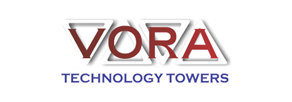
What is a 401k in Australia? 401k Vs Superannuation

Retirement savings are a crucial aspect of financial planning, and different countries have their systems to support this goal. The 401k plan is a well-known retirement savings option in the United States. However, in Australia, the equivalent system is called Superannuation. This article will explore the differences and similarities between these two retirement savings systems.
What is a 401k in Australia?
A 401k is a retirement savings plan primarily used in the United States. It allows individuals to contribute a portion of their pre-tax income to a designated retirement account. These contributions are typically invested in various assets such as stocks, bonds, and mutual funds to grow over time for retirement. However, Australia has no direct equivalent to a 401k.
Superannuation in Australia
In Australia, Superannuation is the closest financial instrument similar to a 401k plan. Superannuation is a government-mandated retirement savings system that requires both employer and employee contributions. Employers are legally obliged to contribute a percentage of an employee’s earnings to a superannuation fund, which is currently set at 11% and will increase to 12% by 2025.
Read More – SMSF Investment Strategy for Your Retirement
401k Vs Superannuation
Contributions
- 401k: Employees typically make contributions through automatic deductions from their paychecks. These contributions can be tax-deferred, reducing current taxable income.
- Superannuation: Contributions involve both employer and employee contributions. Employees can contribute a portion of their salary, while employers are legally obliged to make contributions on behalf of their workers.
Employer Involvement
- 401k: Employer contributions are often in the form of matching contributions, where the employer matches a portion of the employee’s contributions.
- Superannuation: Employer contributions are mandated by law and can be more substantial than those in 401k plans.
Tax Considerations
- 401k: Contributions are tax-deferred, reducing taxable income in the year of contribution. Withdrawals during retirement are subject to income tax.
- Superannuation: Contributions are typically made with pre-tax dollars, reducing taxable income. Withdrawals during retirement may enjoy favourable tax rates, including potential tax-free benefits.
Investment Options
- 401k: Individuals have a range of investment choices, including mutual funds, stocks, bonds, and property.
- Superannuation: Investment options are chosen by members offered by their super fund or through self-managed super funds for greater control.
Access to Funds
- 401k: Withdrawals can be made without penalties at age 59½. Early withdrawals may incur taxes and penalties.
- Superannuation: Withdrawals are typically allowed at preservation age (between 55 and 60, depending on birth year) under specific conditions. Early withdrawals can also result in taxes and penalties.
Benefits and Drawbacks
Here are the key benefits and drawbacks of contributing to a 401k versus a superannuation fund:
Benefits of Contributing to a 401k
- Tax-deferred contributions: Contributions to a 401k are made with pre-tax dollars, reducing your taxable income in the year of contribution.
- Tax-free growth: Investments in a 401k grow tax-free until withdrawal, allowing for significant long-term growth.
- Employer matching: Many employers offer matching contributions to 401k plans, providing free money to boost your retirement savings.
Drawbacks of Contributing to a 401k
- Taxable withdrawals: Withdrawals from a 401k are taxed as ordinary income, which can be higher than the tax rate on superannuation withdrawals.
- Early withdrawal penalties: Taking money out of a 401k before age 59½ generally results in a 10% early withdrawal penalty, in addition to regular income tax.
Required minimum distributions: You must begin taking required minimum distributions (RMDs) from a 401k after age 72, even if you are still working.
Benefits of Contributing to a Superannuation Fund
- Concessional tax rate: Employer contributions (superannuation guarantee) and salary sacrifice contributions are taxed at a concessional rate of 15%.
- Tax-free withdrawals: Withdrawals during retirement are generally tax-free, providing a significant tax advantage.
- Preservation rules: Superannuation funds are preserved until you meet a condition of release, such as reaching preservation age or retiring.
Drawbacks of Contributing to a Superannuation Fund
- Contribution limits: There are limits on how much you can contribute to a superannuation fund each year, both on a concessional and non-concessional basis.
- Preservation rules: Superannuation funds are preserved until you meet a condition of release, meaning you cannot access the money until retirement.
- Investment options: The investment options in a superannuation fund may be more limited compared to a self-managed fund or other investment vehicles.
The optimal choice between a 401k and a superannuation fund depends on your circumstances, retirement goals, and tax situation. It’s important to seek professional advice to determine the best approach for your specific needs.
Can I Return to Australia After Claiming Superannuation?
Yes, you can return to Australia after claiming superannuation. The Australian Taxation Office (ATO) and superannuation funds allow you to claim your superannuation benefits even if you plan to return to Australia. The eligibility criteria for claiming superannuation remain the same, regardless of your plans:
- Temporary Resident Visa: You must have entered Australia on a temporary visa issued under the Migration Act 1958 (except subclasses 405 and 410).
- Visa Expiration or Cancellation: Your visa must have expired or been cancelled.
- Departure from Australia: You must have already left Australia.
- Non-Permanent Resident or Citizen: You must not be a permanent resident of Australia or an Australian or New Zealand citizen.
Once you meet these conditions, you can claim your superannuation as a Departing Australia Superannuation Payment (DASP). The tax treatment for DASP payments is detailed in the table below:
| Withdrawal Type |
Australian Tax Return |
Australian Tax Treatment |
| Lump sum as a Departing Australian Superannuation Payment (DASP) |
No |
Since 1 July 2017, the Working Holiday Makers (WHM) tax rate has been 65% for both taxed and untaxed elements. WHMs are those on the following visa types: 417 (Working Holiday), 462 (Work and Holiday), and associated bridging visas |
Key Points:
- Taxation: Tax is withheld from your final payment, and the amount of tax you pay will depend on several factors.
- Payment: You can receive your money by cheque in Australian dollars, international money transfer, or have it transferred to an Australian bank account.
- Timeframe: Payment is generally made within 28 days of receiving your application
If someone advises accessing your super early or setting up an SMSF, ensure they’re a licensed financial adviser. Consult an SMSF Service Specialist for guidance in Australia.
Conclusion
In summary, while the 401k and superannuation systems both aim to save for retirement, they differ in structure and benefits. The 401k emphasizes individual contributions and tax-deferred growth, while superannuation involves employer and employee contributions with tax advantages. Choosing between them depends on personal financial goals and circumstances.
For those returning to Australia after claiming superannuation, the process is feasible under specific conditions outlined by the Australian Taxation Office. The Departing Australia Superannuation Payment (DASP) allows eligible individuals to access their funds, with tax implications varying based on visa type. Professional advice is recommended for tailored retirement and repatriation planning.









